Perk Up with 6 Tasteful Malaysian Drinks
Lighten your mood and rejuvenate your senses with 6 must-try Malaysian drinks!
Discover the authentic in Asian cuisine food

Congee is eaten all across Asia but it’s known by many different names and in many different forms. The type of congee eaten may even change within one country. In China, for example, the Cantonese in the south make congee in a different style to those in the north, and Hong Kong and Taiwan each have their own versions.
So to properly introduce you to the wide world of congee, we’re going to take you on a whirlwind rice-porridge adventure. It’s like a Contiki tour of congee, minus the drinking and the bus.

From emperors to peasants, congee is widely enjoyed throughout Chinese history and its society. Because of that, there are so many different variants to be found according to region. The Chinese also made congee using a variety of grains such as barley and millet. However, steadily many congee recipes settle on rice as the preferred ingredient, a preference that has spread throughout neighbouring Asiatic cultures.
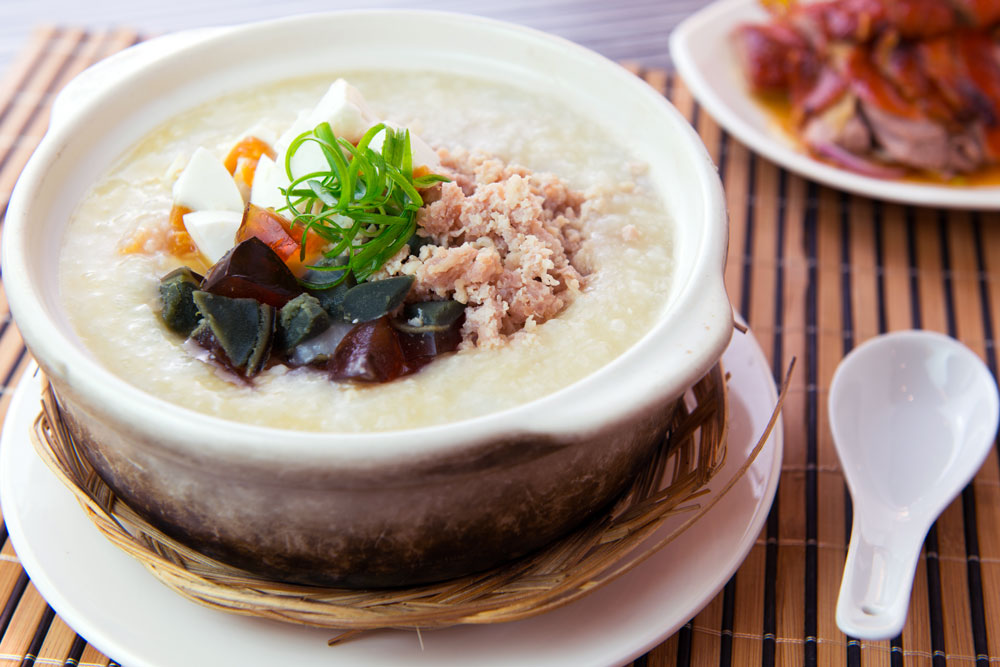
If you know your Yum Cha menu well, you’d always find a bowl of Hong Kong-style congee at the ready. It is a favourite Cantonese comfort food, in which the rice grains are boiled with a large amount of water for a longer time to turn it into a soupy puree. This dish is usually served with strips of pork, ginger, and a dash of coriander, but it is most famous for its use of the love-it or hate-it century egg.
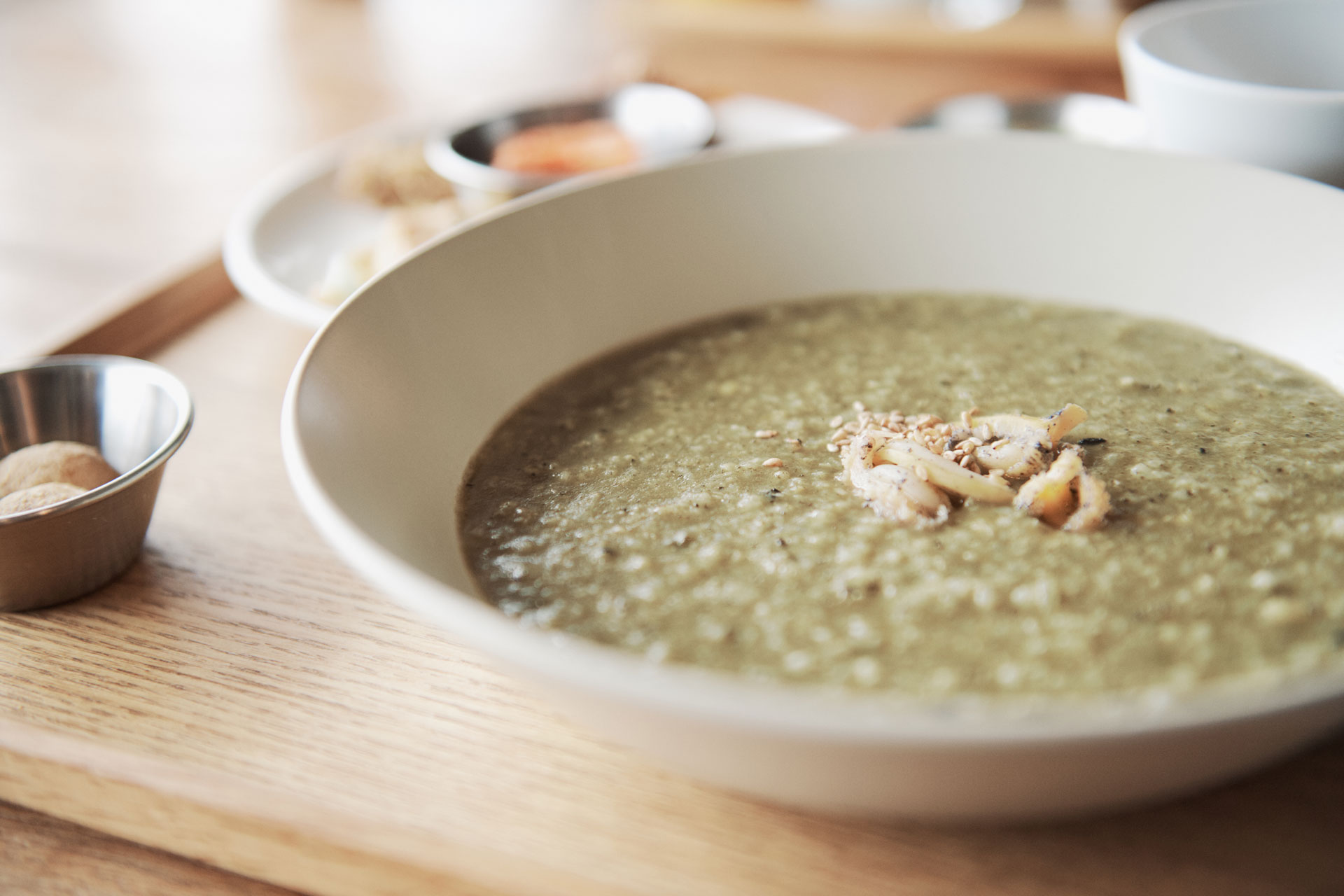
Like its neighbours, the Koreans love their congee – also known as ‘Juk’ – too. While there are several types of Juk to savour, one of the most exquisite variants come from the beautiful island of Jeju. Known as Jeonbokjuk, this congee features abalone (jeonbok) and gets its greenish colour and flavour from the shellfish’s guts.

The former British colony of Burma eats congee in its simplest form. Here, it’s known as Hsan Pyoke, which literally translates to ‘rice boiled’. It’s often made with just rice and water and garnished with spring onions. Like most places, it’s considered an excellent food for the ill.
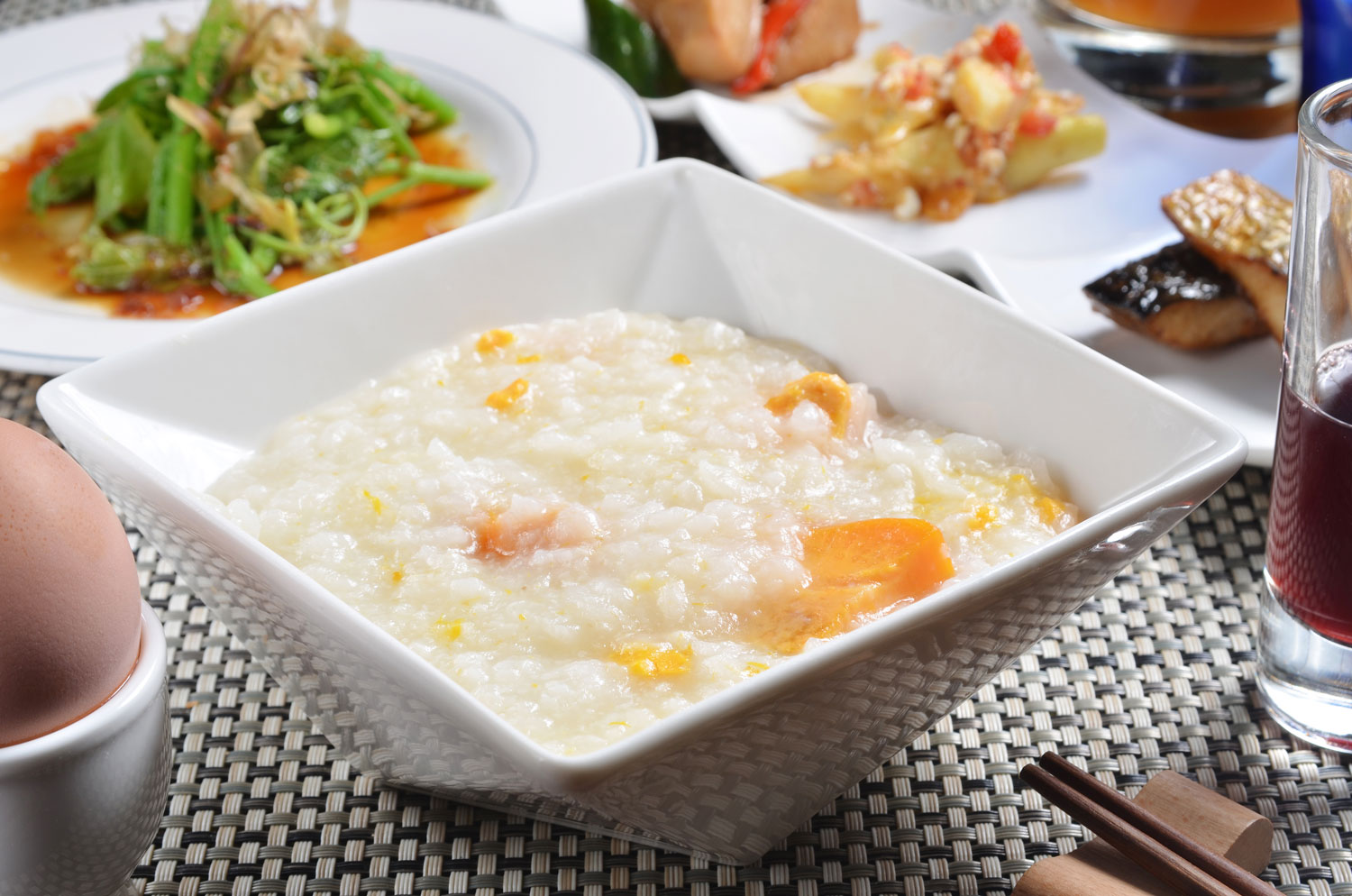
Here, congee is made the same way as it is in the Fujian province of China (south-east coast). This makes perfect sense as it’s the province closest to Taiwan and the jump-off point for many of the original Chinese who immigrated to Taiwan. Much like Myanmar, the congee in Taiwan is made with rice and water, though often sweet potato is added for flavour and eggs are stirred through to thicken up the porridge.
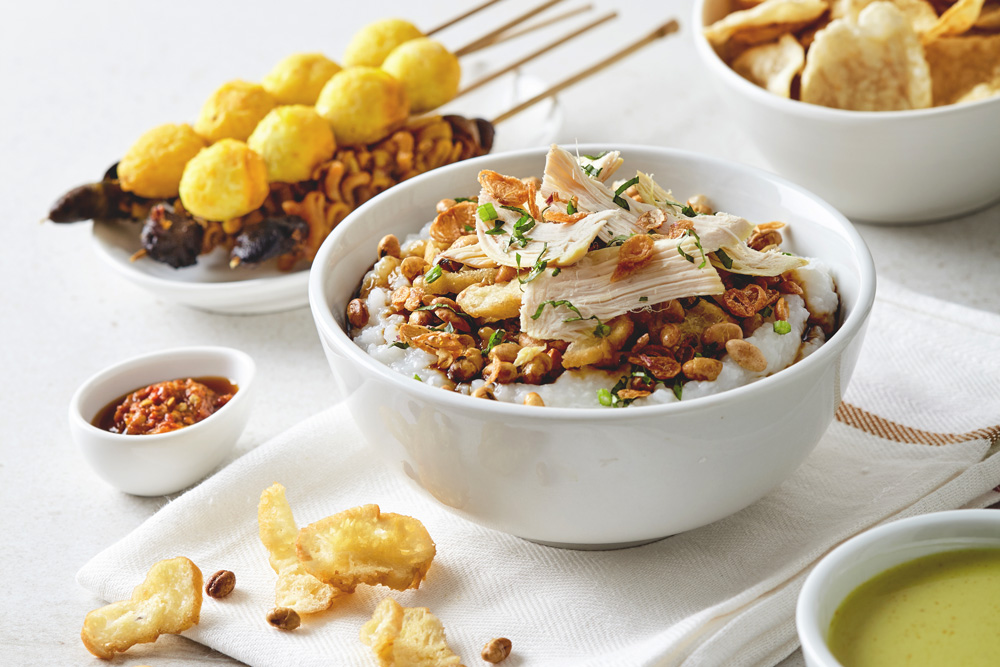
Australia’s closest Asian neighbours call their congee bubur and mostly eat it for breakfast. On a typical morning, you’ll see roaming carts serving bubur ayam in every neighbourhood. It’s commonly served with shredded chicken meat and a variety of condiments like spring onion, crispy fried shallots, fried soybean, Chinese churros (called youtiao, or cakwe in Indonesia), both salty and sweet soy sauce and sometimes topped with turmeric chicken broth (soto sauce) and kerupuk (Indonesian style crackers)
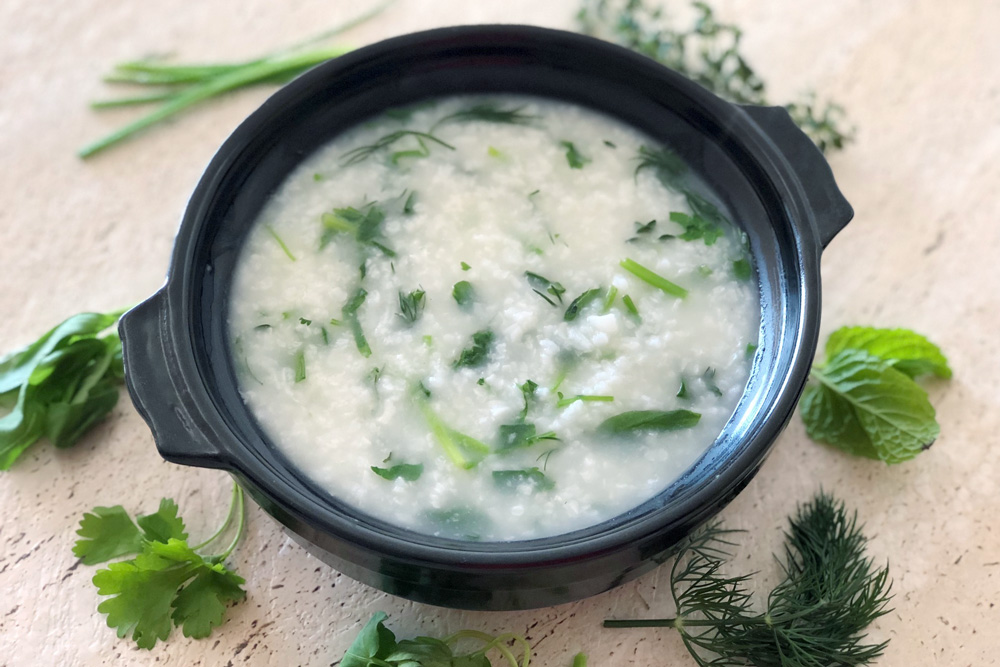
Kayu (sometimes okayu) is much thicker than most other types of congee as the Japanese use a lot less water when cooking the rice. It’s also cooked for less time. It’s typically garnished with spring onions, salmon, roe, ginger and umeboshi (pickled ume fruit). A type of kayu called nanakusa-gayu (“seven herb porridge”) is traditionally eaten on 7 January and is believed to protect the consumer against evil and provide good luck and long life.
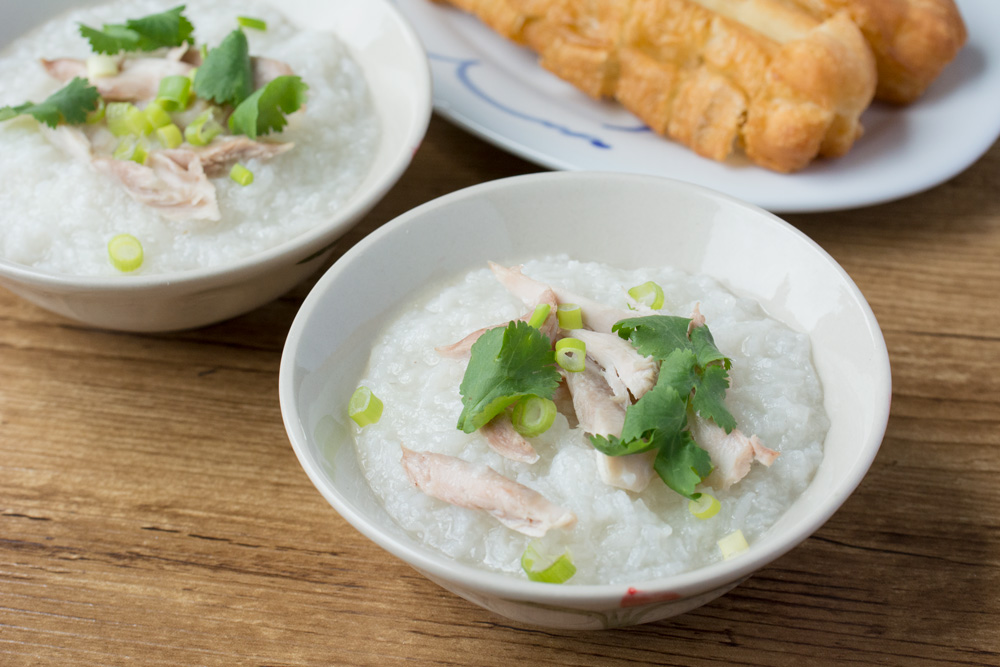
Inspired by the Chinese congee, the Vietnamese cháo gà chicken congee is a sumptuous winter warmer. Rather than cooking its rice and chicken ingredients separately, cháo gà uses the chicken stock, leftover from cooking the chicken, as a base to cook the rice in.

Another breakfast congee, Thai jok is often served with a raw or partially cooked egg, minced pork or beef and chopped spring onions. If you’re feeling fancy, why not add a pathongko (deep-fried doughnut), fried garlic, slivered ginger and spicy pickles. Despite it being most popular in the mornings, jok is sold through the day and is very similar to Laos congee, or khao piak.
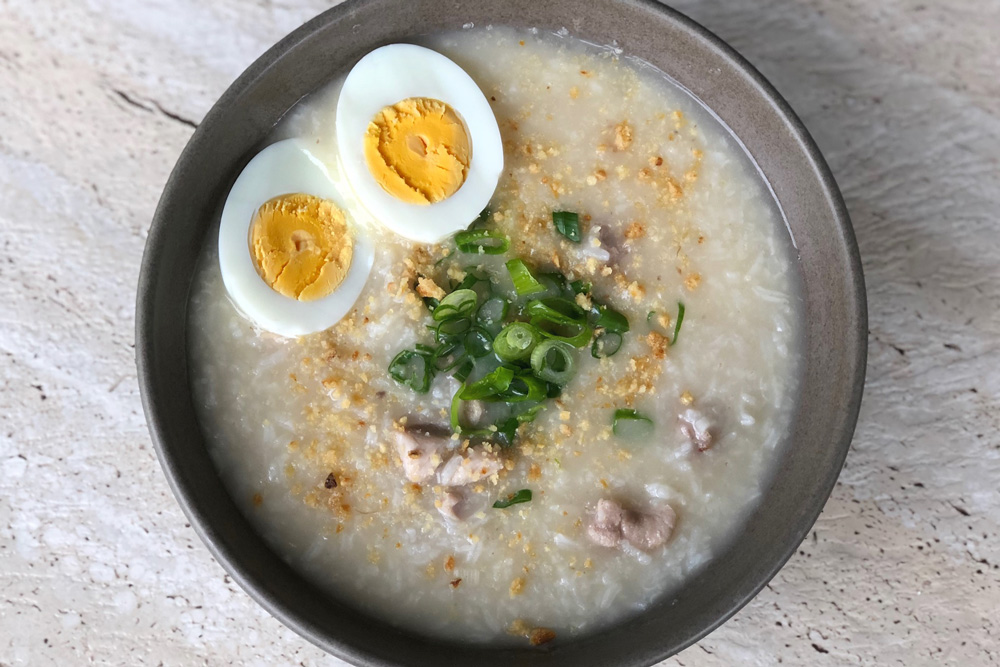
Similar to Cantonese-style congee, lugaw is typically a thicker porridge and is boiled with strips of fresh ginger, You’ll commonly find it topped with spring onions and served with crispy fried garlic with dried red safflower (kasubha) used for colour. Fish or chicken may be added for flavour, but more traditional lúgaw may contain tokwa’t baboy (diced tofu and pork), goto (beef tripe), utak (pig brains), dilà (pig tongue), litid (beef ligaments).
We’ve got some fantastic congee recipes to try now that you’ve been introduced to the world of congee. And if we missed any of your favourites, let us know!

Lighten your mood and rejuvenate your senses with 6 must-try Malaysian drinks!

Pair your hearty barbecues with these refreshing Asian delights!

What are the properties of ginger, and how to pick, store and use ginger in your cooking? Find out here!